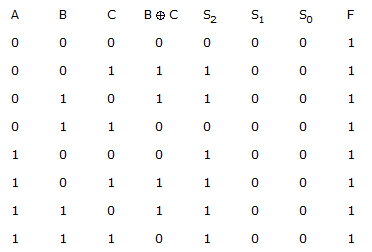ECE :: Exam Questions Paper
-
The following circuit diagram resembles :

-
The voltage applied to an R-L circuit at t = 0 when switch is closed is 100 cos (100 t + 30°). The circuit resistance is 80 Ω and inductance is 0.6 H (in which initial current is zero). What is the maximum amplitude of current flowing through the circuit?
-
For determining the network functions of a two-port network, it is required to consider that
-
Consider the CMOS circuit shown, where the gate voltage VG of the n-MOSEFT is increased from zero, while the gate voltage of the p-MOSFET is kept constant at 3 V. Assume that, for both transistor, the magnitude of the threshold voltage is 1 V and the product of the transconductor parameter and the (W/L) ratio, i.e. the quality μC0x(W/L), is 1mA. V-2.

Estimate the output voltage V0 for VG = 1.5 V. [Hint: Use the approximate current voltage equation for each MOSEFT -
Which of the following circuits come under the class of sequential logic circuits?
- Full adder
- Full subtractor
- Half adder
- J-K flip-flop
- Counter
-
Which of the following measurements can be done using a counter?
- Pulse duration
- Interval between two pulses
- Amplitude of the pulse
- Rise time of a pulse
-
The maximum power dissipation capacity of a transistor is 50 mW. If the collector emitter voltage is 10 V, what is the safe collector current that can be allowed through the transistor?
-
Consider the following statements regarding registers and latches:
- Registers are made of edge-triggered FFs, whereas latches are made from level-triggered FFs.
- Registers are temporary storage devices whereas latches are not.
- A latch employs cross-coupled feedback connections.
- A register stores a binary word whereas a latch does not.

 m(0, 1, 4, 6, 7)
m(0, 1, 4, 6, 7) 
 Whatsapp
Whatsapp
 Facebook
Facebook









